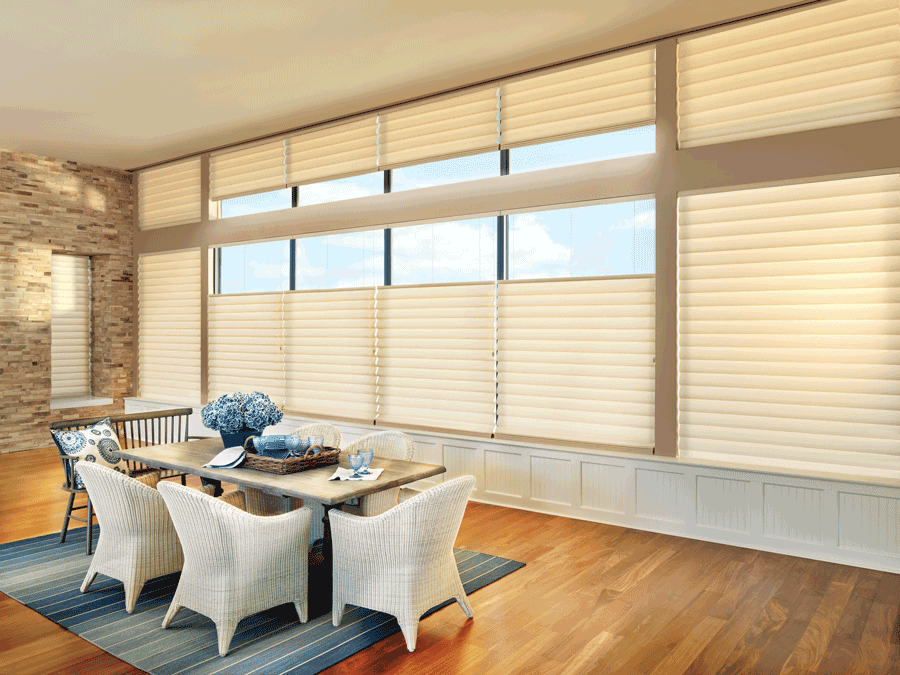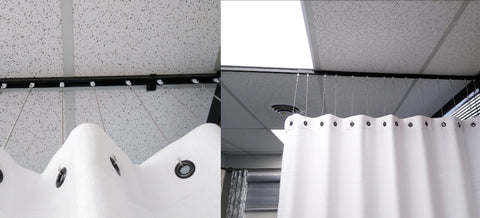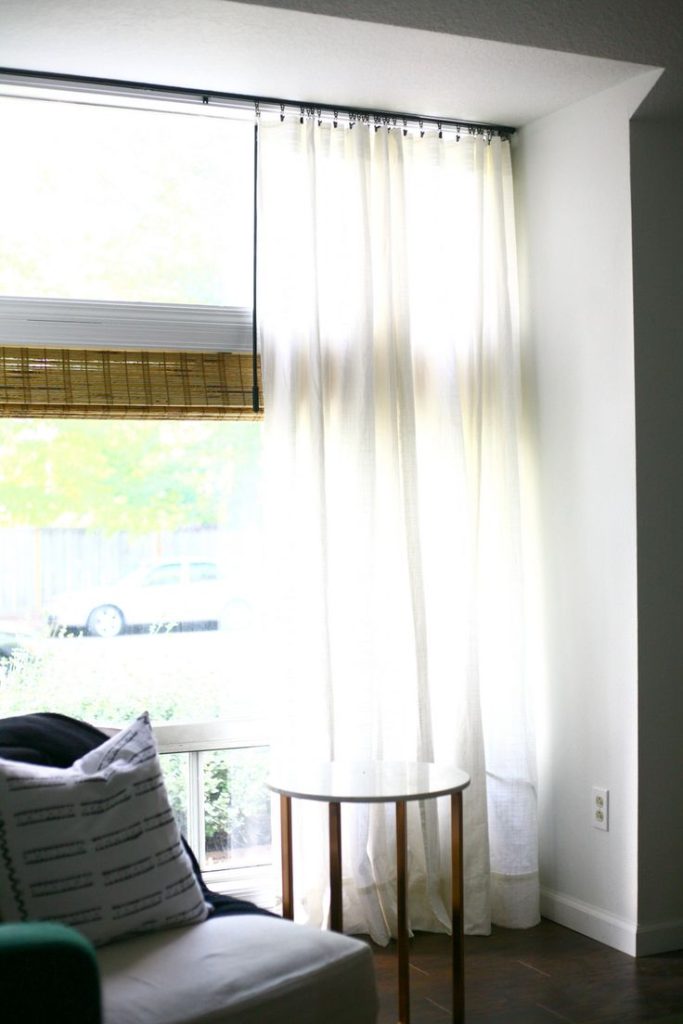Floor-to-ceiling windows have long been associated with luxury, modern design, and expansive views. These tall windows can completely transform a room by flooding it with natural light and creating a connection to the outdoors. However, they also pose unique challenges when it comes to finding the perfect window treatments. Whether you’re looking to control the amount of light entering your room, increase privacy, or enhance the aesthetic appeal, choosing the right floor to ceiling window treatments is key.

In this comprehensive guide, we’ll explore different types of window treatments, how to choose the right style for your space, and tips for installation and maintenance. We’ll also cover considerations such as energy efficiency, materials, and trends to help you make an informed decision.
Why Choose Floor to Ceiling Window Treatments?
Floor-to-ceiling windows offer an open and elegant look, but they come with their challenges. Here’s why investing in floor to ceiling window treatments can make all the difference:
- Light Control: Without proper window treatments, large windows can let in excessive sunlight, which can cause glare and heat up the room. The right treatments allow you to adjust the amount of light entering your space.
- Privacy: These windows often cover large areas of walls, so maintaining privacy can be a concern, especially in urban environments or ground-level rooms.
- Aesthetic Appeal: Window treatments can frame your windows beautifully, adding texture, color, and depth to your room design.
- Energy Efficiency: Large windows can cause heat loss during the winter and heat gain during the summer. Quality treatments can provide insulation and contribute to energy savings.
- UV Protection: Direct sunlight can damage furniture, flooring, and artwork over time. Window treatments can help block harmful UV rays and extend the life of your interior furnishings.
Read too: Exploring the Efficiency of Radiant Ceiling Heater Electric: A Comprehensive Guide
Types of Floor to Ceiling Window Treatments
There are various options available for floor to ceiling window treatments, and each brings its own set of advantages. Here are some of the most popular choices:
1. Drapes and Curtains
Drapes are one of the most versatile and stylish options for covering large windows. They offer several customization options in terms of fabric, length, color, and pattern. You can select heavy blackout drapes for complete light control or choose sheer fabrics that allow filtered light while maintaining some privacy.
Pros:
- Customization: Available in a wide range of fabrics, colors, and patterns.
- Light Control: Choose between blackout, semi-sheer, or sheer options.
- Insulation: Heavier fabrics can add insulation, making your room more energy-efficient.
Cons:
- Maintenance: Depending on the fabric, drapes may require regular cleaning to avoid dust buildup.
- Space: They require enough wall space for installation and can look bulky in small rooms.
2. Blinds
Blinds are an effective option for those looking for precise control over light and privacy. Vertical blinds, in particular, are well-suited for tall windows. These can be made from materials like wood, faux wood, aluminum, or vinyl, depending on your aesthetic and budget.
Pros:
- Light Control: Easy to adjust for varying levels of light.
- Durability: Blinds tend to be sturdy and long-lasting.
- Sleek Look: A minimalist, streamlined appearance that complements modern interiors.
Cons:
- Limited Insulation: Blinds don’t provide as much insulation as drapes.
- Noise: Blinds can be noisy when adjusted or during windy conditions.
3. Shades
Shades are another popular option for large windows. Roller shades, Roman shades, and cellular shades are the most common types. Shades come in various opacity levels, allowing you to control the amount of light and privacy.
Roller Shades:
These are a sleek and modern choice for floor to ceiling window treatments. Available in materials ranging from blackout to light-filtering, roller shades can be motorized for easy operation.
Cellular Shades:
Known for their honeycomb design, cellular shades provide excellent insulation, helping to regulate room temperature while still offering a stylish look.
Pros:
- Energy Efficient: Cellular shades, in particular, help with insulation.
- Customizable: Available in different levels of opacity and material choices.
- Minimalist Design: A clean and modern option that works well in contemporary spaces.
Cons:
- Limited Design Options: Shades are often less decorative compared to drapes.
- Manual Operation: Unless motorized, some shades may be hard to reach or operate in tall windows.
4. Shutters
For a timeless and classic look, shutters are a great option. They offer a tailored look and provide excellent control over light and airflow. Plantation shutters are especially popular for floor to ceiling window treatments because they add a touch of elegance while maintaining functionality.
Pros:
- Durability: Shutters are made of solid materials like wood or vinyl, which are long-lasting.
- Aesthetic: They add value to your home and create a polished look.
- Low Maintenance: Shutters are easy to clean and maintain.
Cons:
- Cost: Shutters can be more expensive upfront compared to other window treatments.
- Permanent: Once installed, shutters are difficult to remove or adjust.
5. Motorized Window Treatments
For the ultimate in convenience and luxury, consider motorized window treatments. Whether you choose drapes, blinds, or shades, motorization allows you to open and close your treatments with the push of a button or via a smart home system. Motorized treatments are particularly useful for hard-to-reach windows.
Pros:
- Convenience: Control with a remote, app, or smart home integration.
- Precision: Easily adjust for exact light levels and privacy needs.
- Safety: No cords, making them child and pet-friendly.
Cons:
- Cost: Motorized treatments tend to be more expensive than manual options.
- Installation: Requires electrical wiring or batteries, which may add complexity to the installation.
Choosing the Right Window Treatments for Your Space
When deciding on floor to ceiling window treatments, consider the following factors:
1. Functionality
What is the primary function of your window treatments? If you need privacy and light control, drapes or blinds may be the best option. If you’re focusing on energy efficiency, cellular shades or shutters could be the ideal choice. Motorized options are great for convenience, especially in homes with smart home systems.
2. Style and Aesthetic
The window treatments you choose should complement your room’s design. For example, if you have a modern or minimalist interior, sleek roller shades or vertical blinds might work best. For a more traditional or luxurious space, heavy drapes or plantation shutters can enhance the decor.
3. Energy Efficiency
Floor-to-ceiling windows can let in a significant amount of heat during the summer and cold air during the winter. Consider energy-efficient window treatments like cellular shades or lined drapes that provide insulation and help maintain a comfortable room temperature.
4. Budget
Window treatments for large windows can be expensive, so it’s essential to plan your budget carefully. While motorized systems and high-end fabrics offer premium experiences, more affordable options like standard blinds or shades can still provide functionality and style without breaking the bank.
5. Privacy and Light Control
In bedrooms or spaces requiring more privacy, blackout shades or lined drapes are effective. In living areas where natural light is welcome, sheer curtains or light-filtering shades can provide soft lighting without sacrificing privacy.
Installation Tips for Floor to Ceiling Window Treatments
When installing floor to ceiling window treatments, it’s essential to take accurate measurements and ensure proper placement for the best visual and functional results.
1. Measure Accurately
- Measure the height from the floor to the ceiling to determine the appropriate length for drapes or curtains.
- For blinds and shades, measure the width of the window as well as the height from the top of the window to the floor.
2. Install High for Maximum Effect
When installing drapes, hang them close to the ceiling rather than directly above the window to create the illusion of taller windows and a more dramatic effect.
3. Consider Professional Installation
Floor-to-ceiling window treatments, especially motorized ones or heavy drapes, can be challenging to install. If you’re unsure, hiring a professional ensures that your window treatments are hung correctly and securely.
Conclusion
Choosing the right floor to ceiling window treatments can significantly enhance the look, feel, and functionality of your space. Whether you prefer the elegance of drapes, the sleek look of blinds, or the convenience of motorized options, there are plenty of choices to suit every style and need. By considering factors such as light control, energy efficiency, and budget, you can make an informed decision that will elevate your home’s design and comfort.






